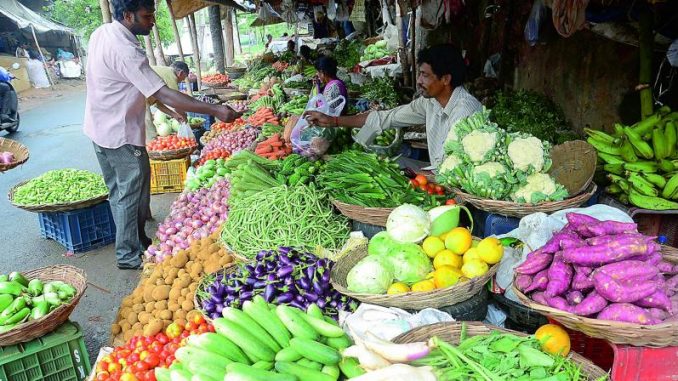
By Sriram Iyer
This year, India expects its third consecutive normal monsoon, brightening the prospects for the country’s agricultural sector. However, it may be too early for consumers to expect relief on the inflation front.
The India Meteorological Department on Wednesday forecast 97% of the long-term annual average rainfall across almost all regions of the country this year.
“…good rains in central India should boost production of pulses, oilseeds, and cotton, given this region accounts for 50-60% of national production. Good rains in the northwest should be a positive for sugarcane,” global brokerage firm Nomura said in a report on May 30.
In the normal course, this would imply lower food prices. However, a string of factors could spoil the party.
A government constrained
The Narendra Modi government had promised to double farmers’ income but has achieved little in its four years in power. Agricultural distress has stubbornly refused to abate.
“In the last four years, the level of real agricultural GDP (gross domestic product) and real agriculture revenues have remained constant,” India’s latest annual economic survey said. While the country’s crop production has hit record levels, farmers’ livelihoods have not improved due to a variety of reasons, the most significant being the Reserve Bank of India’s hawkish stance on inflation.
This makes things difficult politically for the incumbent regime now that India’s preparing for a string of state elections this year and the general election of May 2019.
So Modi is likely to try and keep farmers in good humour. “A prosperous farm sector will help alleviate some of the political risks this year, given that farm unrest has been one of the top electoral issues for the 2019 general elections,” Nomura said in its report.
To improve rural voter sentiment, the government is looking to aggressively support farmers with higher prices and plug leakages in the state support. The government’s annual budget for financial year 2019 had guaranteed farmers a 50% profit on their production costs. This may limit the fall in prices due to higher output following the good monsoon.
Moreover, another of the government’s thrust areas is exports. The annual budget had proposed to liberalise the export of agricultural commodities and set an annual export target of $100 billion, more than thrice the current value of $30 billion. That translates into lesser supply at home.
Thirdly, the expected agricultural recovery will boost rural consumption and demand, which may further limit the fall in food prices despite better supply.
So don’t count on cheaper food items yet.
Source: Quartz

Leave a Reply